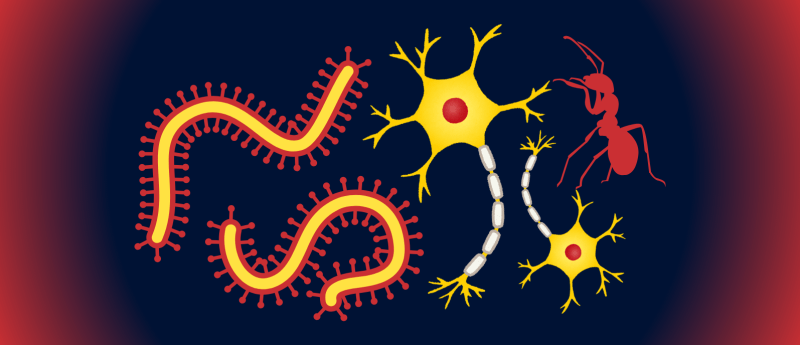How a creepy crawly could treat neurological diseases

Original story from Virginia Tech (VA, USA).
Structures in millipede secretions have been found to modulate specific neuroreceptors in ant brains.
Millipedes get a bad rap — their many legs put people off and could classify them as ‘creepy crawly’. But these anthropods’ secretions could hold the key to new drug discovery for the treatment of neurological diseases and pain.
Chemist Emily Mevers and her team from Virginia Tech (VA, USA) recently discovered a new set of complex structures in millipede secretions that can modulate specific neuroreceptors in ant brains.
The newly discovered structures fall into a class of naturally occurring compounds called alkaloids. The Mevers team named them the andrognathanols and the andrognathines after the producing millipede, Andrognathus corticarius, found on Virginia Tech’s Blacksburg campus in Stadium Woods (VA, USA).
A new compound discovery
Mevers specializes in leveraging the chemistry of underexplored ecological niches, in this case the millipede, in the name of drug discovery.
After collecting millipedes from under leaf litter and fallen branches in Stadium Woods, Mevers and team members used a variety of analytical tools to identify the compounds contained in the millipedes’ defensive glands. They also learned that the millipedes release these compounds to ward off predators while also sharing their location with their kin.
 Nature knows best: gecko-inspired chemotherapeutic delivery method
Nature knows best: gecko-inspired chemotherapeutic delivery method
Gecko-inspired ultra-sticky particles can be loaded with chemotherapy drugs and attached to tumors, minimizing impact to healthy tissue.
Broader implications
Despite their pervasiveness, much about millipedes remains mysterious — including their specific habitats, numbers, diets, behaviors and chemistry. Mevers, in collaboration with millipede expert Paul Marek in the entomology department, is working to fill in some of these gaps and see if what they uncover could be useful for future medications.
Previously, Mevers and Marek examined a millipede native to the Pacific Northwest, Ishcnocybe plicata, and discovered that related alkaloids potently and selectively interact with a single neuroreceptor called Sigma-1. The interaction suggested that this family of compounds may have useful pharmacology potential for the treatment of pain and other neurological disorders.
The Mevers group discovered that the new alkaloids are actively secreted from the Hokie millipede when it is physically disturbed. The secretions cause disorientation in ants, a presumed natural predator. A subset of these compounds possesses similar interactions with the Sigma-1 neuroreceptor.
Moving toward drug development
With the newfound complex compounds in hand, the next step is finding people to actually make them in larger quantities and evaluate their biomedical applications.
“These compounds are quite complex, so they’re going to take some time to synthesize in the lab,” explained Mevers.
Once larger quantities are available, Mevers will be able to better study their properties and potential in drug development.
This article has been republished from the following materials. Material may have been edited for length and house style. For further information, please contact the cited source. Our press release publishing policy can be accessed here.